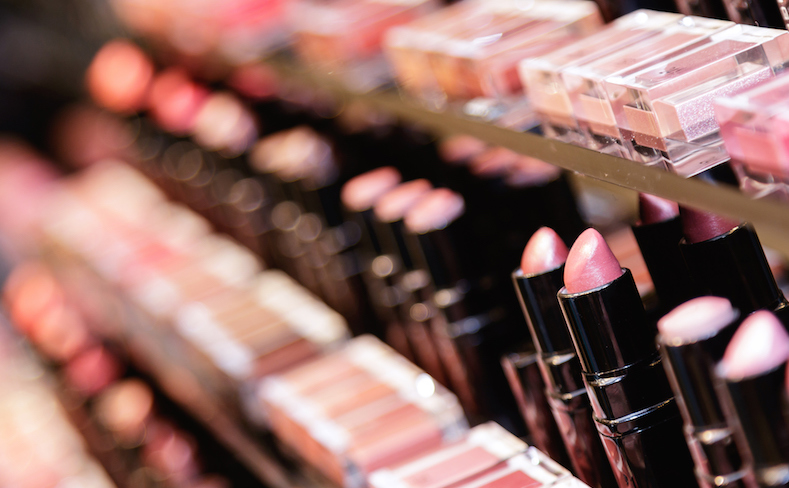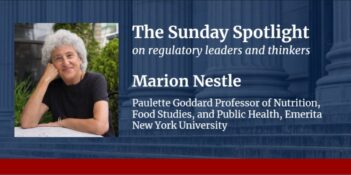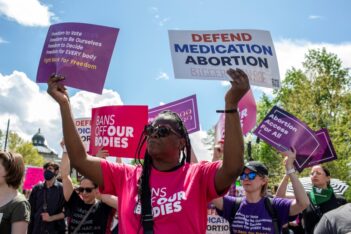
Scholar argues that the association between cosmetics and femininity has contributed to harmful under-regulation.
The U.S. Food and Drug Administration (FDA) announced last week that eye shadow and other face makeup sold at Claire’s Stores, a nationwide beauty supply retailer catering to children and teenagers, had tested positive for asbestos. This is the second recall on Claire’s cosmetics in the last three months. During the first recall, which occurred in March, the agency released a statement saying that FDA “does not have authority to mandate a recall.” Instead, it simply warned consumers not to use the beauty products.
A week after the agency’s March statement, Claire’s announced a voluntary recall and pulled the three potentially contaminated cosmetics from stores.
These recent recalls highlight issues regulators confront under the current federal cosmetics law, the Federal Food, Drug, and Cosmetic Act (FDCA). In a recent paper, Marie Boyd of the University of South Carolina School of Law argues that FDA under-regulates cosmetics compared to other products that the agency oversees. She points to the FDCA and says that this 500-page law has fewer than two pages devoted to cosmetics.
Observing that cosmetics are “gendered” products used primarily by women, Boyd contends that this association has contributed to the lack of regulation. She says that products associated with femininity have been “undervalued.” The under-regulation of cosmetics also disproportionately impacts women’s health.
Unlike drugs, which must be registered with FDA and are subject to mandatory oversight and inspection, cosmetics are subject to substantially less regulatory oversight and do not need to be approved before they are sold, Boyd notes.
Cosmetics companies that sell their products directly to consumers can decide whether they want to register with FDA and provide the agency with lists of ingredients. Under this system, FDA may be unaware of how many manufacturers are creating cosmetics or what types of ingredients they are using.
FDA is also unable to monitor safety risks and adverse events associated with cosmetics due to the lack of regulatory authority, Boyd argues.
Cosmetics manufacturers are not required to report adverse events to FDA. Instead, the agency relies on manufacturers to voluntarily report issues.
Inspections of cosmetic manufacturing facilities are also uncommon, but Boyd says that when they do occur, manufacturers are not subject to the same inspection standards that FDA uses for food and drug facility inspections. For example, FDA does not have the authority to inspect a cosmetics company’s records to examine documentation of potential safety issues, Boyd says.
FDA labeling requirements are also less stringent for cosmetics as compared to drugs and food products. FDA’s cosmetics regulations do not require products that are sold for professional use in places such as hair and nail salons to have ingredient labels, Boyd says. She argues that workers who use these products and the customers they treat may be unaware of the potential hazardous chemicals in the cosmetics.
Boyd argues that the association between women and cosmetics has contributed to the underdevelopment of cosmetics regulation. Society often views cosmetics as feminine products and Boyd contends that “traits and qualities associated with women or femininity have been devalued.”
Cosmetics may also be under-regulated because researchers have not adequately studied how these products affect women’s health. Boyd argues that, in medical testing for new drugs, researchers have tended primarily to focus on how treatments affect men’s health but have understudied how the health risks for certain drugs may differ for women.
Although former FDA employees have said that cosmetics are safer than the food and drugs that FDA regulates, Boyd argues that without regulations requiring documentation, cosmetics’ safety risks and harms remain largely unknown.
But scholars have demonstrated that beauty products can contain ingredients that are hazardous to human health. In one study, researchers found that a variety of cosmetics, including lipsticks and eye shadows, had high levels of lead that could potentially yield toxic effects with continuous exposure.
The literature also indicates that some of the ingredients in beauty products may disrupt the endocrine system and contribute to “early puberty in girls, premature delivery, and cancer,” Boyd says.
Of course, not all cosmetics have the same health risks. A woman’s race and socioeconomic status may also determine exposure to hazardous chemicals, Boyd says. Scholars have suggested that hair and beauty products that are marketed to black women may contain more potentially harmful ingredients compared to products sold to the general population. Boyd also says that women of lower socioeconomic status may not be able to afford to buy products that are free from hazardous ingredients.
Boyd argues that, to address potential health risks, new regulations should focus on establishing ways for FDA to gather information and assess products’ safety. U.S. Congress and FDA should require cosmetics manufacturers and distributors to register with FDA and report adverse events. Manufacturers should also be required to provide FDA with all of their products’ ingredients and access to records for inspection.
Boyd also argues that Congress and FDA need to encourage researchers to evaluate more fully cosmetics’ potential risks to women’s health. She says that researchers should consider how risks impact women of different socioeconomic status, race, and ethnicity.
Those who oppose stricter cosmetics regulations might argue that the industry has established a voluntary review organization to examine product safety. But the industry’s safety assessments do not examine long-term health risks, Boyd says. Furthermore, because the industry review is optional, there are often not enough data to determine whether an ingredient is safe.
“It is not enough simply to claim that cosmetics are the safest product category that FDA regulates,” Boyd concludes. She wants women to have proof.



